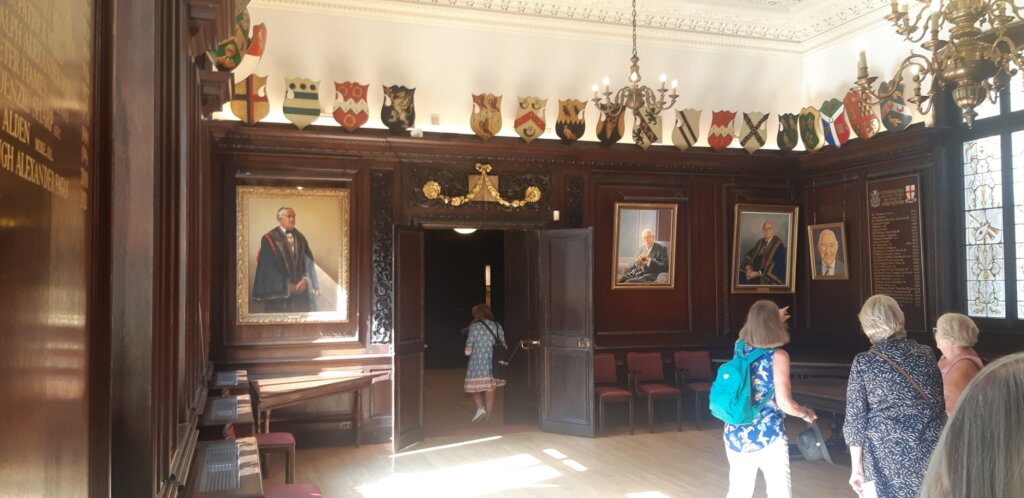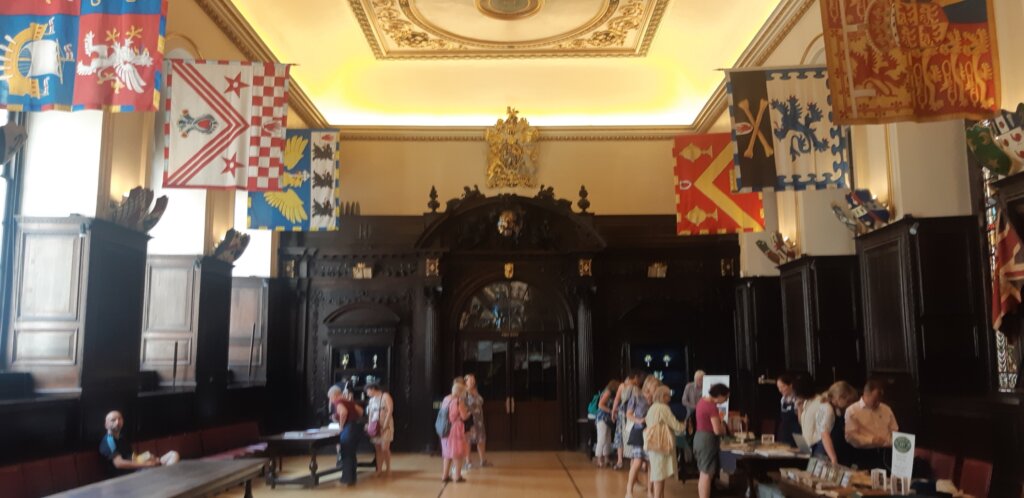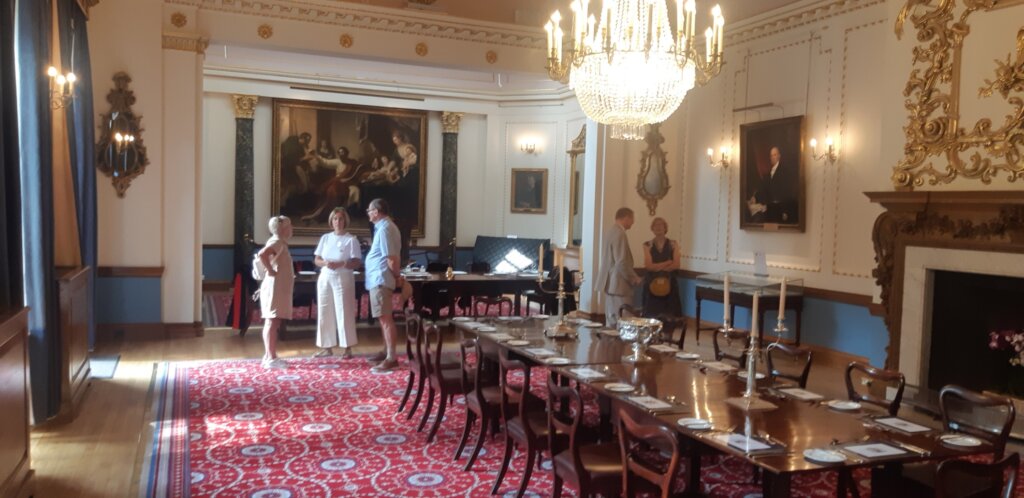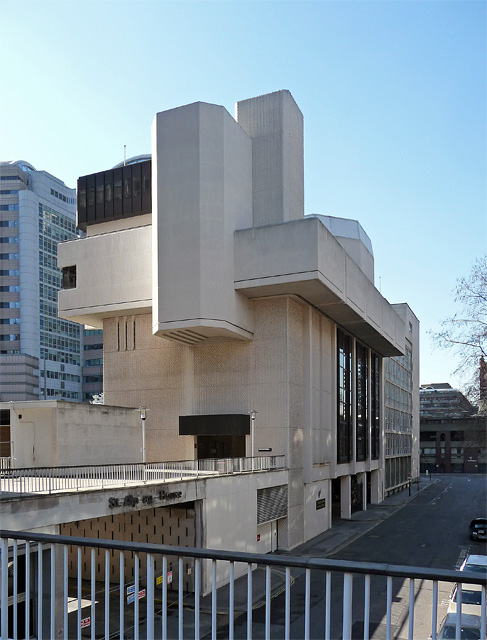We always enjoy Open House Days in London, when buildings that you don’t often get an opportunity to visit throw open their doors.
This year we took the opportunity to see inside some of London’s livery halls.
Back in the Middle Ages tradesmen set up Guilds to regulate their business (and to prevent competition from non-guild members). When some guilds introduced their own distinctive clothing and regalia – or livery – to distinguish their members from those in other guilds, they became known as livery companies. The peak period for the formation of guilds was the 14th century when many received charters from the Crown, enshrining their rights to control trade in their areas.
The most powerful English Livery Companies were those based in London, but their rights extended only within the City. As London grew, with many businesses set up outside the City, and trade became more competitive, the Livery Companies had less power and gradually ceased to become a significant element in the control of business. The companies still exist though and are joined by new companies seeking to improve the public profile of their profession. Nowadays, the Livery Companies are mainly concerned with education and charities, often with links to public schools such as the Merchant Taylors schools (so called because ‘tailors’ is a nasty modern spelling).
The Livery Companies established ‘Halls’ (sometimes originally regular houses) in which to conduct their business. In time, these Livery Halls became very grand, reflecting the importance of the companies. Unfortunately, all were destroyed in the Great Fire of London, with many of their replacements bombed out during the Blitz.
Architects’ Hall
We visited three livery halls during Open House. One was the Architects Hall, which incorporates the Old Temple Bar, which used to mark the boundary between Westminster and the City of London. Designed by Christopher Wren, it was built across Fleet Street between 1669 and 1672. It was always a purely ceremonial barrier (it had no gates, so was always open) and by the end of the 19th century the obstruction to the free flow of traffic was no longer considered acceptable. In 1878 it was removed. It was bought by a successful brewer, Henry Meux, and rebuilt as a garden feature on his estate in Theobolds Park in Hertfordshire.
By 2003 the building was in poor state of repair and it was returned to London, this time to be incorporated into the redevelopment of Paternoster Square by St Paul’s Cathredral. Here it now stands as part of the home of the Worshipful Company of Chartered Architects. This means that one of the newest of the Livery Companies has one of the oldest halls.
Temple Bar is a well known and much-photographed building, so I didn’t take my own photo. This picture is taken from Wikipedia.

The offices of the Architects Hall are in the modern building to the right of the photo above, but they incorporate the one small room above the arch. It was never designed as usable space and was, for many years used to store ledgers, until the weight of the paper threatened to collapse the floor. It’s now a meeting room with the interior practically rebuilt and of little historical interest. It’s fun, though, to stand inside and look out through the window over the gateway.
Stationers’ Hall
Most livery companies have modern halls. Many of the old halls were destroyed during the Blitz. One of the oldest is the Stationers Hall which dates back to the building put up after the Great Fire.
The Stock Room was originally used to house stock: notably copies of Old Moore’s Almanack which the Company owned the copyright of and which was a big money-spinner for them. It’s been redesigned since the 17th century and it’s been a while since it’s actually been used to store books or magazines.

This is the actual Hall, the heart of any livery company.

And here is the Court Room, which was added in 1748.

Salters’ Hall
The third Hall we visited was the Salters’ Hall. This is a modern building, designed by Sir Basil Spence, who was responsible for Coventry Cathedral. It’s a striking block, one of the only Livery Halls in the City to have been built in a truly contemporary style. Unfortunately, it’s not particularly photogenic.

